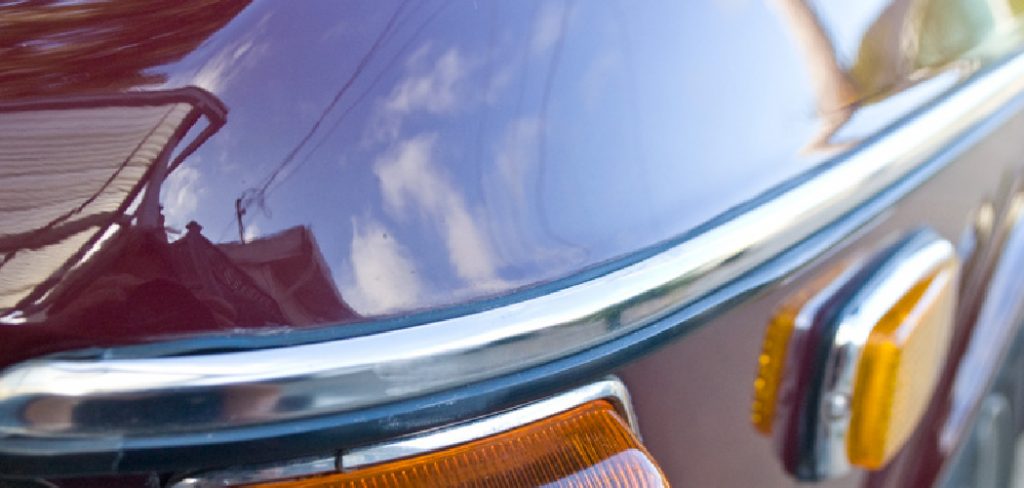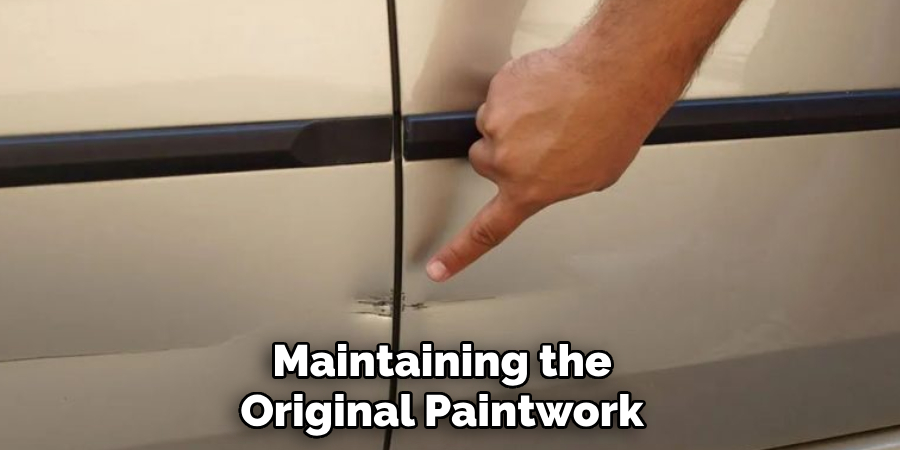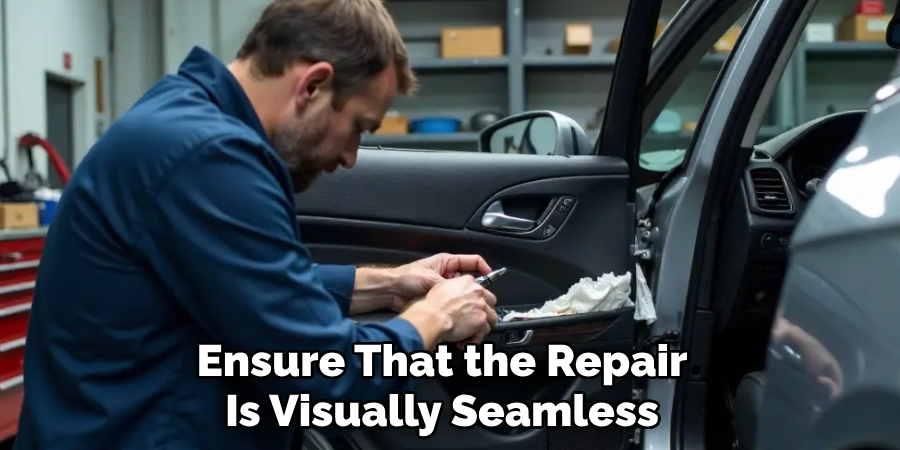A door ding is a small dent or scratch on a car’s surface caused by the impact of another car door, shopping cart, or similar object. These minor yet noticeable blemishes can detract from your car’s overall appearance, leaving it looking less pristine. Beyond aesthetics, door dings can negatively impact your vehicle’s resale value, making it essential to address them promptly.

Luckily, learning how to fix door ding issues is simple and cost-effective, allowing you to restore your car’s surface without resorting to expensive professional repairs. This article focuses on easy, effective methods to tackle door dings at home. We will cover the key steps, including assessing the damage, selecting an appropriate repair method, and helpful tips to prevent future dings so your car stays looking its best.
Understanding Door Dings
What Causes Door Dings?
Door dings are often the result of everyday scenarios that can’t always be avoided. Tight parking spaces are a common culprit, particularly in crowded lots where car doors are opened too close to neighboring vehicles.
Shopping carts rolling unattended or being pushed carelessly can also leave noticeable dents on car surfaces. Additionally, other drivers or passengers opening their vehicle doors too abruptly may cause impact damage to adjacent cars.
Types of Damage
Door dings can vary in severity, and understanding the type of damage is essential for determining the best repair method. Some dings appear as small dents with no paint damage, making them relatively easy to fix. Others may involve noticeable paint scratches or chips, requiring a bit more effort. Occasionally, deep dents occur, calling for advanced repair techniques or professional assistance.
Why Fix Door Dings?
Ignoring door dings can lead to further issues over time, such as rust development or peeling paint. Addressing these blemishes promptly helps preserve your car’s visual appeal and maintain its market value. Repairs not only enhance the appearance of your vehicle but also prevent the damage from worsening.
Tip: Always assess the severity of the ding before selecting a repair approach to ensure optimal results.
Tools and Materials Needed
Before you begin repairing door dings, gathering the appropriate tools and materials for the job is essential. Proper preparation will ensure a smoother and more efficient process. Below is a categorized list of what you may need:

Basic Tools
- Dent puller, hairdryer or heat gun, and plunger
- Microfiber cloths for cleaning
Advanced Tools
- Paintless dent repair (PDR) kit with specialized tools like rods and glue tabs
- Sandpaper (if paint requires touching up)
Materials
- Touch-up paint, polishing compound, and car wax
Safety Equipment
- Gloves and goggles to protect your hands and eyes during the repair
Tip: Gather all tools and materials before starting the repair to streamline the process and reduce interruptions. This preparation can save time and help you achieve optimal results.
How to Fix Door Ding: Methods for Fixing Door Dings
Using a Plunger
This method is suitable for shallow dents and doesn’t require specialized tools. Wet the dent and the rubber edge of the plunger to create better suction. Place the plunger over the dent and pull gently but firmly. Repeat the process until the dent pops out. This is a simple, cost-effective technique for minor dings.
Heat and Cold Technique
This method relies on the rapid expansion and contraction of materials, ideal for metal dents. Start by heating the dented area using a hairdryer or a heat gun, keeping it a few inches away from the surface to avoid damage.
Once heated, quickly apply dry ice or spray compressed air upside down onto the area. The sudden temperature shift can cause the metal to contract, popping the dent back into shape.
Paintless Dent Repair (PDR)
For more precise repairs, a PDR kit offers an effective solution. Use specialized tools like rods or glue tabs included in the kit. Follow the instructions carefully to manipulate the metal from behind or pull the dent from the front using the glue tabs. This technique is great for maintaining the original paintwork and restoring the car’s surface seamlessly.

Filling and Sanding (For Paint Damage)
This method is your best option if the dent has also chipped the paint. Start by filling the dent with automotive body filler, smoothing it out, and allowing it to cure. Once hardened, sand the area until it’s even with the surrounding surface. Use matching touch-up paint to restore the color, followed by a clear coat for a polished finish.
Tip: Choose the method that best suits the depth and severity of the ding. Properly assessing the damage beforehand can save time and ensure better results.
Polishing and Finishing Touches
Polishing the Repaired Area
Once the repaired area has been painted and the clear coat has dried, the next step is polishing. Use a high-quality polishing compound to help the repaired area blend seamlessly with the surrounding surface. Apply a small compound to the area and gently buff it with a microfiber cloth or a polishing pad.
Use circular motions to achieve a smooth and even finish. Be patient during this process, as proper polishing requires time and care for the best results. This step enhances the visual appearance and smooths out any unevenness left by the repair process.
Applying Wax
After polishing, applying wax to the area is essential to restore the car’s natural shine and provide an added layer of protection. Choose a car wax that matches your vehicle’s finish and apply a thin, even layer over the repaired area.
Use a microfiber cloth to buff the wax, revealing a glossy and attractive finish. Waxing also helps prevent future damage by protecting the repair from UV rays, dirt, and moisture.
Tip: These finishing steps ensure that the repair is visually seamless and durable, keeping your car looking as good as new for years to come.
Common Mistakes to Avoid
Skipping Surface Cleaning
One of the most common mistakes is neglecting to clean the surface before starting the repair. Dirt or debris left on the car’s surface can cause scratches or abrasions when tools are used, leading to further damage.
Overheating the Paint
Using excessive heat during dent repair can have detrimental effects. Overheating the paint may cause it to blister or fade, and in severe cases, it can even warp the metal, making the repair process much more difficult.

Using Excessive Force
When applying pressure during dent removal—whether pulling or hammering—it’s important to be gentle. Applying too much force can worsen the dent or create new ones, resulting in a more extensive repair.
Ignoring Paint Damage
Leaving paint damage untreated may seem minor, but over time it can lead to rust formation. This not only affects the appearance of the vehicle but can also compromise its structural integrity.
Tip: Carefully follow the repair instructions and work methodically to avoid causing additional damage to your vehicle.
When to Consult a Professional
While minor dents and dings can often be handled through DIY methods, certain situations necessitate the expertise of a professional.
Severe Dents
If the dent is deep, large, or located in a challenging area, it likely requires advanced tools and specialized techniques that professionals are trained to use. Attempting to fix these severe dents without proper knowledge may worsen the damage.
Extensive Paint Damage
When a dent includes large areas of missing or cracked paint, it’s best to consult an expert. Paint damage left untreated can lead to rust and further deterioration. Professionals can carefully restore the appearance while protecting the vehicle from future issues.
Special Finishes
Vehicles with metallic, pearl, or custom paint finishes require precision and specialized equipment for touch-ups. DIY attempts on such finishes may fail to match the original color or texture, diminishing the car’s overall aesthetic.
Tip: Professional repair services ensure high-quality results for complex repairs, safeguarding both the appearance and value of your vehicle. When in doubt, trust a technician to handle the more demanding jobs and restore your car to its best possible condition.
Preventing Door Dings in the Future
Taking proactive steps can significantly reduce the chances of pesky door dings. Here are some effective tips to protect your vehicle and maintain its pristine condition:
Park Strategically
Opt for end spots in parking lots or park farther away from crowded areas whenever possible. These spaces offer more room and minimize the risk of other car doors hitting your vehicle. Additionally, avoid parking near large vehicles or areas with heavy shopping cart traffic, as these are common sources of accidental dings.
Use Protective Accessories
Protective tools, such as door edge guards or parking bumpers, are highly effective in shielding your car from minor impacts. Consider using a car cover in areas with tight spaces or high pedestrian activity for added protection. These accessories can act as a buffer, reducing the likelihood of damage.
Be Mindful
Pay close attention when opening your own doors, especially in narrow spaces or proximity to other vehicles. Encouraging passengers to do the same can help prevent any unintentional damage.
Tip: Investing in prevention measures helps save time and money on repairs and keeps your vehicle looking its best. A little mindfulness goes a long way in maintaining its value and appearance.

Conclusion
Fixing door dings is essential for preserving your car’s appearance and maintaining its resale value. Various repair methods, such as simple DIY techniques like plungers and heat application or professional Paintless Dent Repair (PDR), cater to different needs and budgets. Polishing and finishing the repaired area ensures seamless results, restoring your car to its original condition.
To prevent future dings, incorporate protective accessories and mindfulness into your daily routine. Understanding “how to fix door ding” quickly and affordably empowers car owners to easily handle minor damage while keeping their vehicles in top-notch shape.
